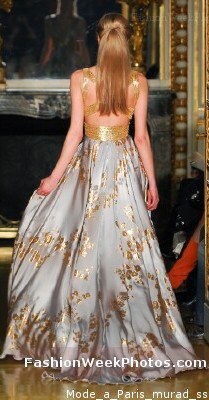
One of the primary purposes of clothing is to keep the wearer comfortable. In hot climates clothing provides protection from sunburn or wind damage, while in cold climates its thermal insulation properties are generally more important. Shelter usually reduces the functional need for clothing. For example, coats, hats, gloves, shoes, socks, and other superficial layers would normally be removed when entering or once inside a warm home, particularly if one is residing or sleeping there. Similarly, clothing has seasonal and regional aspects, so that thinner materials and fewer layers of clothing are generally worn in warmer seasons and regions than in colder ones.

Clothing can protect against many things that might injure the uncovered human body. Clothes act as protection from the elements, including rain, snow and wind and other weather conditions, as well as from the sun. Clothes also reduce the level of risk during activity, such as work or sport. Clothing at times is worn as protection from specific environmental hazards, such as insects, noxious chemicals, weapons, and contact with abrasive substances. Conversely, clothing may protect the environment from the clothing wearer, as with doctors wearing medical scrubs.

Humans have shown extreme inventiveness in devising clothing solutions to environmental hazards. Some examples include: space suits, air conditioned clothing, armor, diving suits, swimsuits, bee-keeper gear, motorcycle leathers, high-visibility clothing, and other pieces of protective clothing. Meanwhile, the distinction between clothing and protective equipment is not always clear-cut, since clothes designed to be fashionable will often have some protective value and clothes which are designed to be functional will often consider fashion in their design.

In most cultures, [[gender differences|gender differentiation]] of clothing is considered appropriate for men and women. The differences are in styles, colors and fabrics.

In Western societies, [[skirt]]s, [[Dress (garment)|dresses]] and [[high-heeled shoe]]s are usually seen as women's clothing, while [[necktie]]s are usually seen as men's clothing. [[Trousers]] were once seen as exclusively male clothing, but are nowadays worn by both sexes. Male clothes are often more practical (that is, they can function well under a wide variety of situations), but a wider range of clothing styles are available for females. Males are typically allowed to [[bare chested|bare their chests]] in a greater variety of public places. It is generally acceptable for a woman to wear traditionally male clothing, while the converse is unusual.

In some cultures, [[sumptuary law]]s regulate what men and women are required to wear. [[Islam]] requires women to wear [[hijab]], or modest clothing. What qualifies as "modest" varies in different Muslim societies; however, women are usually required to cover more of their bodies than men are. Articles of clothing worn by Muslim women for purposes of modesty range from the [[headscarf]] to the [[burqa]].

Men may sometimes choose to wear colorful clothing, while in very traditional cultures women are protected from men's gazes by modest dress.

In some societies, clothing may be used to indicate rank or [[social status|status]]. In ancient [[Ancient Rome|Rome]], for example, only senators were permitted to wear garments dyed with [[Tyrian purple]]. In traditional [[Native Hawaiians|Hawaiian]] society only high-ranking chiefs could wear [[feather cloak]]s and palaoa or carved [[whale]] teeth. Under the [[Travancore]] Kingdom of [[Kerala]], ([[India]]), lower [[caste]] women had to pay a tax for the right to cover their upper body. In [[China]], before the establishment of the [[Republic of China|republic]], only the emperor could wear [[yellow]]. There are numerous examples throughout history of elaborate systems of [[sumptuary law]]s regulating what people could wear. In societies without such laws, which includes most modern societies, social status is instead signaled by the purchase of high cost, rare, or luxury items, the purchase of which are effectively limited to those with the wealth or status to acquire them. In addition, [[peer pressure]] may influence clothing choice.
Religious clothing might be considered a special case of occupational clothing. Sometimes it is worn only during the performance of religious ceremonies. However, it may also be worn everyday as a marker for special religious status.

For example, [[Jain]]s wear unstitched cloth pieces when performing religious ceremonies. The unstitched cloth signifies unified and complete devotion to the task at hand, with no digression.{{Citation needed|date=October 2008}} Sikhs wear a turban as it is a part of their religion.

The cleanliness of religious dresses in Eastern Religions like [[Hinduism]], [[Sikhism]], [[Buddhism]] and [[Jainism]] is of paramount importance, since it indicates purity.
Clothing figures prominently in the [[Bible]] where it appears in numerous contexts, the more prominent ones being: the story of Adam and Eve, Joseph's cloak, Judah and Tamar, Mordechai and Esther. Furthermore the priests officiating in the Temple had very specific garments, the lack of which would make one liable to death.

Jewish ritual also requires rending of one's upper garment as a sign of mourning. This practice is found in the Bible when Jacob hears of the apparent death of his son Joseph.